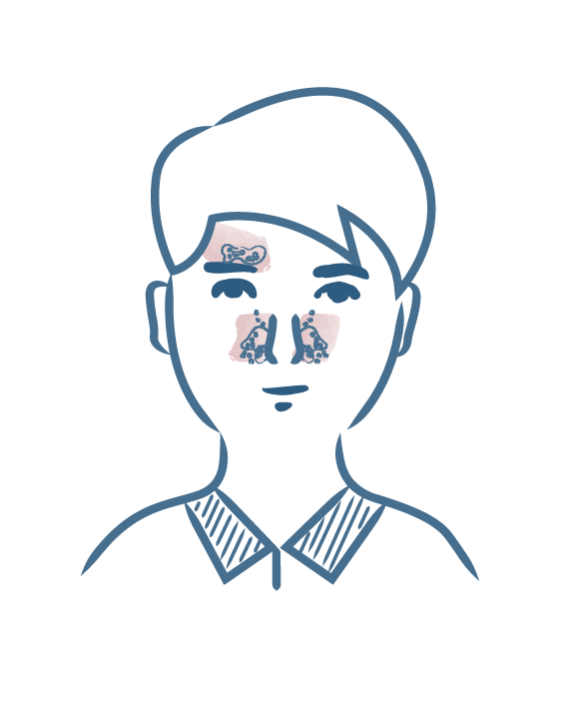-
Your concerns
Our articles to help you gain a better understanding
-
Our solutions
-
DUCRAY Dermatological Laboratories
Our articles to help you gain a better understanding

The face is the second most common site of seborrheic dermatitis and is also the most visible form of the disease. The face is affected in 65% of cases of seborrheic dermatitis(1).
Seborrheic dermatitis on the face often goes undiagnosed as sufferers interpret their symptoms as simply skin that is sensitive to environmental factors. The latter are indeed triggers, but seborrheic dermatitis of the face is a condition in its own right.
The condition appears on the face as oily and sometimes crusted scales. Generally speaking, itching is less intense than on the scalp.
Naturally, the extent and topography, i.e. the location of lesions, varies from one patient and one flare-up to another.
Lesions on the face can affect different areas:
Most of the time, lesions on the face are symmetrical. In severe forms of seborrheic dermatitis on the face, these lesions may take on an erythematoskeletal appearance, i.e. a red inflammatory plaque and greasy and sometimes crusted scales.
The presence of these scales can sometimes lead patients to believe that their skin is simply dry, resulting in inappropriate treatment.
Creams are available to treat seborrheic dermatitis on the face. They provide antimycotic action and help fight against the proliferation of yeast of the Malassezia genus.
It is recommended that you follow the dosage recommended by your physician or pharmacist.
(1) Misery L. Dermatite séborrhéique. EMC - AKOS Traité de Médecine. (2011), pp. 1-5.
Irritated skin with redness and scales

Skin prone to seborrheic dermatitis